2003-01-23 10:53
KCTA being ready for the 21st century
In the late 1980s, the Port of Busan suffered from extremely heavy demurrage and detentions, failing to handle snowballing container cargoes in the wake of wharf shortage. With such delays, global carriers have been reluctant to call at Busan and have connected to Busan through feeder services, which caused excessive logistic costs and low competitiveness in overseas exports for Korean traders. Building more container wharves seemed inevitable.
However, the government couldn?t meet wharfage requirements for the eye-popping increase of containers with government financial assistance, nor with re-investment of port incomes in port constructions.
Against urgent demand to build container wharves, the Korea Container Terminal Authority (KCTA) was born on April 3, 1990 under the ?Korea Container Terminal Authority Act?enacted on December 30, 1989. It was established to help smooth the distribution of container cargoes by unifying domestic port development, management and operation in Korea. Since its birth, it has successfully constructed the Gamman terminal, Uam Terminal, Singamman terminal in the Port of Busan and Phase I wharf and Phase 2 - 1 wharf in the Port of Gwangyang, adding 20 berths, 12 in Busan and 8 in Gwangyang, to accommodate around 4 million TEUs of additional cargoes. It is also sparing no effort to continuously develop the Phase 2-2 and 3 wharf in the Port of Gwangyang and its hinterland development.
The Korea Shipping Gazette met with Mr. Nam-il Cho, president and CEO of KCTA, to find out about future plans for Korean terminals.
- Korea Shipping Gazette (KSG): Glad to meet you, Mr. Cho. Could you explain, at first, the main projects related with container wharves and facilities that the KCTA promoted in 2002?
Mr. Cho: During the short history of 12 years since its establishment in 1990, the KCTA has produced 20 berths for container wharves, completely solving detention and demurrage problems. Especially, in 2002, KCTA finished the construction of Singamman terminal launched from 1995 and Phase 2-1 wharf in the Port of Gwangyang, 7 berths in total.
Phase 2-2 wharf in Gwangyang is under construction and is scheduled for completion this year and has secured 116,000 pyoung (35,000 square meters) of port related grounds. Phase 3-1 wharf in Gwangyang also started construction in 2002.
Also in 2002, a one berth addition project in the Pusan East Container Terminal (PECT) and Pusan New Port project have been under consideration with likely investment .
- KSG: Where is the KCTA investing now? Could you explain in more detail about PECT coming under private management?
Mr. Cho: The KCTA is investing in the PECT with a 25% share, Yangsan ICD Co., with a 10% share, Korea Logistic Network with 24.68%, Korea Port Technology Co., with 49% and Pusan New Port Co., with a 9% share.
Now, the KCTA is looking to form a joint?venture, investing together with P&O Nedlloyd and PECT on the construction of one more berth in PECT. This project will help PECT to secure cargoes from global shipping carrier as well as increase terminal capacities.
- KSG: Yangsan ICD is a little far away from the Port of Busan, causing extra time and money. As an investor, what do you think of making it more competitive?
Mr. Cho: Yangsan ICD was formed to solve Busan downtown heavy traffic jams and to rationalize logistic flow in the Port of Busan by moving 32 container yards scattered across downtown Busan into the outskirts of Busan.
Yangsan ICD, capable of receiving 1.42 million TEUs of cargoes annually on an area of 383,000 pyoung (116,000 square meters), is handling 1 million TEUs of cargoes now, or about 72% of its potential capacity. Additional costs, 15,000 won per truck, for shuttle charges and toll gate fees, cause shippers to avoid using Yangsan ICD.
After several discussions with the Ministry of Maritime Affairs and Fisheries (MOMAF) and the City of Busan, the KCTA received affirmative responses regarding the exemption of toll gate fees from the City of Busan. The KCTA is also trying to free containers through Yangsan ICD from container taxes temporarily until 2006.
-KSG: Including Korea, several countries in Northeast Asia have been heavily developing ports, aiming for hub port status in the area. The point is that who and how fast will they develop ports to handle expected cargoes? So, what is your future plan to develop container ports in Korea?
Mr. Cho: To be the major hub port in Northeast Asia, we need to equip port facilities enough to handle domestic cargoes and to draw cargoes from neighboring countries. To this end, the KCTA has developed 8 berths in the port of Gwangyang and will add 25 berths more through the development project of phase 2-2, phase 3 and phase 4 in Gwangyang. At the end, Gwangyang will have 33 berths in total by 2011 to handle 9.13 million TEUs of cargoes. And by involving the Pusan New Port project with investment on 8 berths, the KCTA is fully ready for the coming future.
-KSG: Building container terminals requires huge amounts of capital. How do you usually support these construction plans?
Mr. Cho: To build terminals, we, first of all, could use rent fees from terminal leases and then garner further funding from private capital by issuing bonds, loans, and issuing Foreign Securities. Thanks to our excellent credit, the KCTA is raising money with favorable interest rates, 5% lower than the commercial interest rate.
For the aforementioned financing, however, it couldn?t satisfy the complete required funds wholly. Therefore, from 2002, the government is supporting the KCTA with 30 billion won. Next year, we are expected to receive 40 billion won. The KCTA is supposed to have support from the government for around 30% of port investment costs.
-KSG: I think it seems to be absolutely nesessary to build container terminals linked with Information Technology (IT). Considering the high cost of human labor, port automation also seems to be urgent, as well. Do you have any plans or thoughts about this?
-Mr. Cho: The KCTA has been considering various countermeasures for domestic ports to enhance international competitiveness through highly efficient port operation. As a matter of fact, many domestic container ports have been automated to handle cargoes. Especially, the KCTA is focusing on developing wholly automated terminals.
Based on construction plans in 1997, the KCTA is pushing to build the phase 3-2 wharf in the port of Gwangyang as a state-of-the-art unmanned automated container terminal, and has scheduled construction of three berths by 2008.
After successfully completing this plan, this automation technology will be adopted on another domestic ports and finally, export the skills and know-how to overseas.
-KSG: It?s been a pleasure talking to you today, and thank you for your time.
.
However, the government couldn?t meet wharfage requirements for the eye-popping increase of containers with government financial assistance, nor with re-investment of port incomes in port constructions.
Against urgent demand to build container wharves, the Korea Container Terminal Authority (KCTA) was born on April 3, 1990 under the ?Korea Container Terminal Authority Act?enacted on December 30, 1989. It was established to help smooth the distribution of container cargoes by unifying domestic port development, management and operation in Korea. Since its birth, it has successfully constructed the Gamman terminal, Uam Terminal, Singamman terminal in the Port of Busan and Phase I wharf and Phase 2 - 1 wharf in the Port of Gwangyang, adding 20 berths, 12 in Busan and 8 in Gwangyang, to accommodate around 4 million TEUs of additional cargoes. It is also sparing no effort to continuously develop the Phase 2-2 and 3 wharf in the Port of Gwangyang and its hinterland development.
The Korea Shipping Gazette met with Mr. Nam-il Cho, president and CEO of KCTA, to find out about future plans for Korean terminals.
- Korea Shipping Gazette (KSG): Glad to meet you, Mr. Cho. Could you explain, at first, the main projects related with container wharves and facilities that the KCTA promoted in 2002?
Mr. Cho: During the short history of 12 years since its establishment in 1990, the KCTA has produced 20 berths for container wharves, completely solving detention and demurrage problems. Especially, in 2002, KCTA finished the construction of Singamman terminal launched from 1995 and Phase 2-1 wharf in the Port of Gwangyang, 7 berths in total.
Phase 2-2 wharf in Gwangyang is under construction and is scheduled for completion this year and has secured 116,000 pyoung (35,000 square meters) of port related grounds. Phase 3-1 wharf in Gwangyang also started construction in 2002.
Also in 2002, a one berth addition project in the Pusan East Container Terminal (PECT) and Pusan New Port project have been under consideration with likely investment .
- KSG: Where is the KCTA investing now? Could you explain in more detail about PECT coming under private management?
Mr. Cho: The KCTA is investing in the PECT with a 25% share, Yangsan ICD Co., with a 10% share, Korea Logistic Network with 24.68%, Korea Port Technology Co., with 49% and Pusan New Port Co., with a 9% share.
Now, the KCTA is looking to form a joint?venture, investing together with P&O Nedlloyd and PECT on the construction of one more berth in PECT. This project will help PECT to secure cargoes from global shipping carrier as well as increase terminal capacities.
- KSG: Yangsan ICD is a little far away from the Port of Busan, causing extra time and money. As an investor, what do you think of making it more competitive?
Mr. Cho: Yangsan ICD was formed to solve Busan downtown heavy traffic jams and to rationalize logistic flow in the Port of Busan by moving 32 container yards scattered across downtown Busan into the outskirts of Busan.
Yangsan ICD, capable of receiving 1.42 million TEUs of cargoes annually on an area of 383,000 pyoung (116,000 square meters), is handling 1 million TEUs of cargoes now, or about 72% of its potential capacity. Additional costs, 15,000 won per truck, for shuttle charges and toll gate fees, cause shippers to avoid using Yangsan ICD.
After several discussions with the Ministry of Maritime Affairs and Fisheries (MOMAF) and the City of Busan, the KCTA received affirmative responses regarding the exemption of toll gate fees from the City of Busan. The KCTA is also trying to free containers through Yangsan ICD from container taxes temporarily until 2006.
-KSG: Including Korea, several countries in Northeast Asia have been heavily developing ports, aiming for hub port status in the area. The point is that who and how fast will they develop ports to handle expected cargoes? So, what is your future plan to develop container ports in Korea?
Mr. Cho: To be the major hub port in Northeast Asia, we need to equip port facilities enough to handle domestic cargoes and to draw cargoes from neighboring countries. To this end, the KCTA has developed 8 berths in the port of Gwangyang and will add 25 berths more through the development project of phase 2-2, phase 3 and phase 4 in Gwangyang. At the end, Gwangyang will have 33 berths in total by 2011 to handle 9.13 million TEUs of cargoes. And by involving the Pusan New Port project with investment on 8 berths, the KCTA is fully ready for the coming future.
-KSG: Building container terminals requires huge amounts of capital. How do you usually support these construction plans?
Mr. Cho: To build terminals, we, first of all, could use rent fees from terminal leases and then garner further funding from private capital by issuing bonds, loans, and issuing Foreign Securities. Thanks to our excellent credit, the KCTA is raising money with favorable interest rates, 5% lower than the commercial interest rate.
For the aforementioned financing, however, it couldn?t satisfy the complete required funds wholly. Therefore, from 2002, the government is supporting the KCTA with 30 billion won. Next year, we are expected to receive 40 billion won. The KCTA is supposed to have support from the government for around 30% of port investment costs.
-KSG: I think it seems to be absolutely nesessary to build container terminals linked with Information Technology (IT). Considering the high cost of human labor, port automation also seems to be urgent, as well. Do you have any plans or thoughts about this?
-Mr. Cho: The KCTA has been considering various countermeasures for domestic ports to enhance international competitiveness through highly efficient port operation. As a matter of fact, many domestic container ports have been automated to handle cargoes. Especially, the KCTA is focusing on developing wholly automated terminals.
Based on construction plans in 1997, the KCTA is pushing to build the phase 3-2 wharf in the port of Gwangyang as a state-of-the-art unmanned automated container terminal, and has scheduled construction of three berths by 2008.
After successfully completing this plan, this automation technology will be adopted on another domestic ports and finally, export the skills and know-how to overseas.
-KSG: It?s been a pleasure talking to you today, and thank you for your time.
.
많이 본 기사
- 희망봉 우회로 컨선 16% 흡수…내년에도 계속된다‘가스공사 전용선 30% 점유’ 현대LNG해운 해외매각 시끌에미레이트쉬핑라인, 한국법인 출범 “韓 직항노선 확대 추진”국제물류업계, 광양항 마지막 배후단지 활용법 모색한다해양진흥공사, 해운항만물류기업 공급망 확보 지원 강화우수물류기업 인증 체감효과 낮아 “인센티브 확대 필요”‘일상이 된 물류시장 불확실성’, AI·친환경이 돌파구해수부, 내년 선원 최저임금 월 269만원…3.05%↑벌크선시장, 급등 이후 조정 '속도 조절 들어가나'2026 글로벌 공급망 전망과 한국 물류산업의 전략적 대응
- 2028년 유엔 해양총회 한국 유치 확정프랑스 CMA CGM, 동남아-인도 직항로 신설HMM, 연말 맞아 물품기부 캠페인 ‘아름다흠’ 전개해양진흥공사, “中 철광석 수입 증가” 배경 벌크선 운임지수 급등‘수요 둔화 지속’ 컨운임지수 한주만에 1300선으로 후퇴덴마크 노르덴, 남아공 소량화물 수송기업 인수 해양과학기술원, 日과 친환경 연안공간 만들기 '맞손'인사/ 팬오션해운협회, 부산항도선사회와 CCTV 활용 안전도선 업무협약DHL, 중동 두바이에 차세대 물류허브 개소








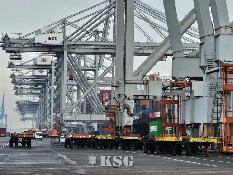


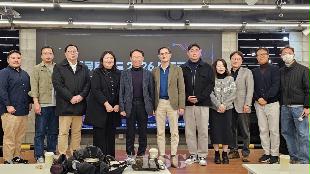


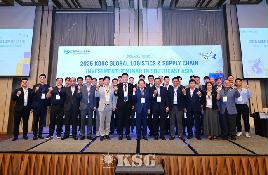

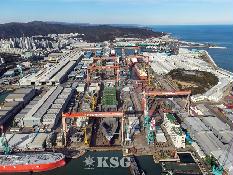

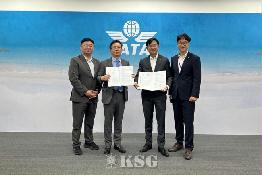
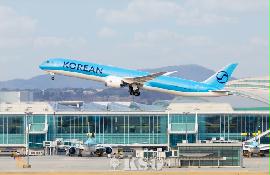


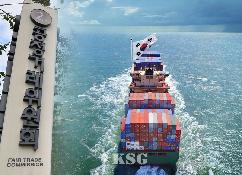
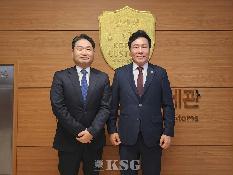


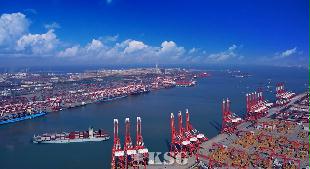

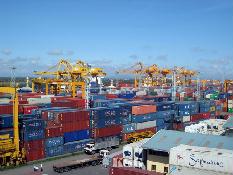






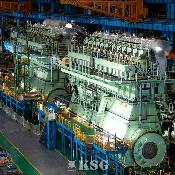
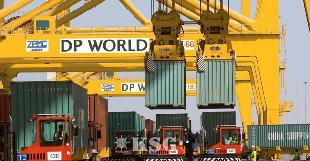

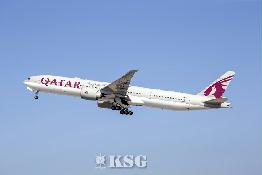
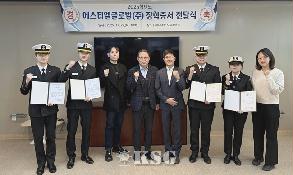
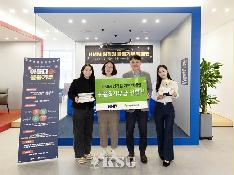





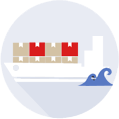















0/250
확인